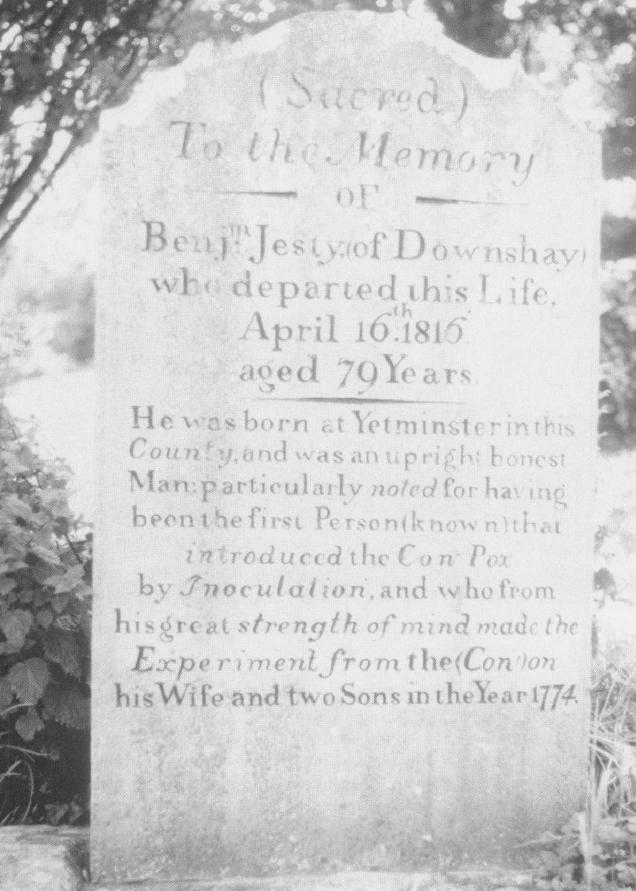Benjamin Jetsy’s grave stone indicated that he utilized cow pox material to inoculate his wife and 2 sons in 1774, 22 years before Jenner’s experiments in 1796.

Benjamin Jesty was a successful farmer, who lived at Yetminster and then moved to Downshay. He dealt in cattle and maintained a herd. In the year 1774, small pox was noted in the vicinity. Jesty had two milkmaids, Ann Notley and Mary Read, who had attended a brother and a nephew suffering with small pox. Neither acquired the disease despite this close contact. Both had previously been infected with cow
pox.
Farmer Jesty knew that a neighboring farmer, Mr. Elford of Chittenhall had several cows then infected with the pox. He took his wife and two small sons, Robert, age 2, and Benjamin, age 3, to Farmer Elford’s
fields. Using his wife’s knitting needle and material from one of Elford’s infected cows he inoculated the boys on one arm above the elbow and Mrs. Jesty below the elbow. He did not inoculate himself since he had had cow pox and was certain he was already protected.
The boys got local reactions while Mrs. Jesty’s arm became much inflamed and she became rather ill. Mr. Trowbridge, the local surgeon, was called to attend her. The boldness and novelty of the attempt produced “no small alarm in the family and no small sensation in the neighborhood”.
All survived the experiment. Elizabeth Jesty lived until 1824, and was buried beside her husband. In 1789 the surgeon, Mr. Trowbridge, during another small pox epidemic, inoculated the two Jesty boys and many of the other children in the neighborhood utilizing material from a known case of small pox. All of the children acquired small pox except the Jesty boys who remained well.
On several occasions Jesty’s sons were exposed to small pox without acquiring the disease, including at least one time when Farmer Jesty had them deliberately exposed. Farmer Jesty extended his practice of vaccination to others including Abigail Brown, as indicated on a plaque at the church at Worth Matravers.
ref: http://www.pubmedcentral.nih.gov/picrender.fcgi?artid=2279376&blobtype=pdf
